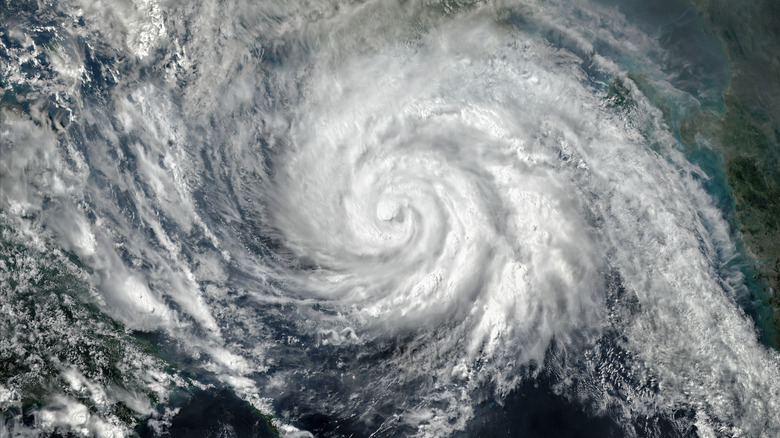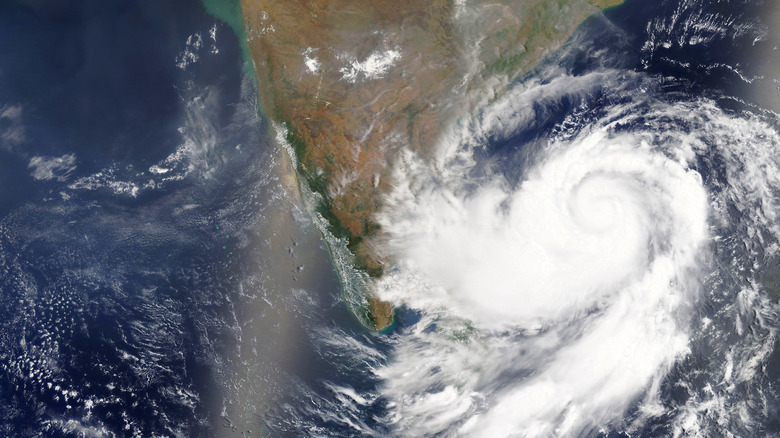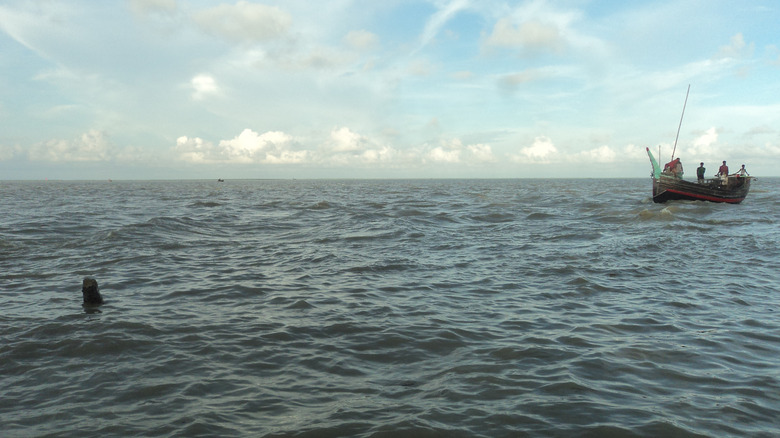Tragic Details About The Deadly Bengal Cyclone Of 1876
Planet Earth is, for all intents and purposes, a nice, friendly home. Unlike the teeny, cold, barren Pluto, or the flaming hot Venus (the hottest planet in the solar system, according to NASA, with a mean temperature of 867 degrees Fahrenheit or 464 degrees Celsius), conditions are generally very suitable. All manner of lifeforms, including ourselves, can flourish here.
This isn't to say, though, that the Earth is one huge, comfy armchair in which we can all relax and live out our lives comfortably and safely, however. As wonderful as that would be, there's no denying that nature can be a formidable and horrifying force when it wants to be.
Sadly, our history is littered with natural disasters, and the devastating damage and death tolls they have left in their wake. The Bengal cyclone of 1876, which ravaged the region in the latter 19th century, is just one example. Here's the story of its buildup, deadly impact, and harrowing aftermath.
Deadly trouble was brewing in the Bay of Bengal
A cyclone is always a formidable and frightening prospect. According to The Weather Guys (via the University of Wisconsin-Madison), cyclones occur as a result of limited pressure in the atmosphere. Winds rotate inwardly, causing the characteristic spiral shape. From tornadoes to the dreaded tropical cyclone, every variety of this meteorological menace is to be respected and feared.
As Britannica reports, one of the most infamous cyclones in history hit the estuary of Bangladesh's Meghna River in October 1876. The tragedy, also called the Great Backerganj Cyclone of 1876, had an enormous and devastating impact (both literally and metaphorically).
The Bay of Bengal, sadly, is no stranger to extreme weather conditions such as these. As Benjamin Kingsbury puts it in "An Imperial Disaster: The Bengal Cyclone Of 1876" (via Google Books), "Every year cyclones came in from the Bay of Bengal at the beginning and end of the south-west monsoon, from May to June and October to November." As a result, rivers burgeoned by heavy rains were even more of a flooding threat. When this particular cyclone made landfall in such conditions, it proved devastating.
Cholera tragically awaited many survivors
In an article published in the December 1877 issue of Popular Science Monthly (via Wikisource), Carl Dambeck writes on the short-term aftermath of the disaster. According to Dambeck (translation via J. Fitzgerald, A.M.), the cyclone began shortly before midnight, and there had been little sign of anything at all coming prior to that. "Three storm-waves swept over an area of 3,000 square miles, containing a population of 1,000,000 souls," Dambeck writes, and suggests that it was almost impossible to give an accurate number of people who were killed by the storm itself.
According to Dambeck, contemporary reports of 215,000 deaths were likely to be a huge underestimation. He writes, " ... [F]or nearly all the officials from whom authentic information might have been obtained themselves perished in the flood, and many villages are known to have lost seventy per cent, of their inhabitants."
Britannica adds that the deadly waves, which reportedly reached 12 meters (40 feet), were just the beginning. Half of those killed were lost in the aftermath. Not carried away by the unrelenting and merciless power of the waters themselves, but dying in the hunger that resulted from the loss of crops, or else the disease that sprung up. Cholera, Dambeck states, became rife, often killing even more people than the initial storm itself owing to the conditions that resulted: " ... [T]here perished in Chittagong during the storm over 3,000 souls, and between October 31st and December 31st, 4,399 persons died of cholera."


